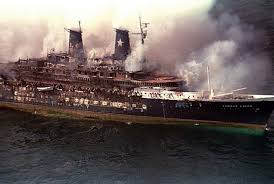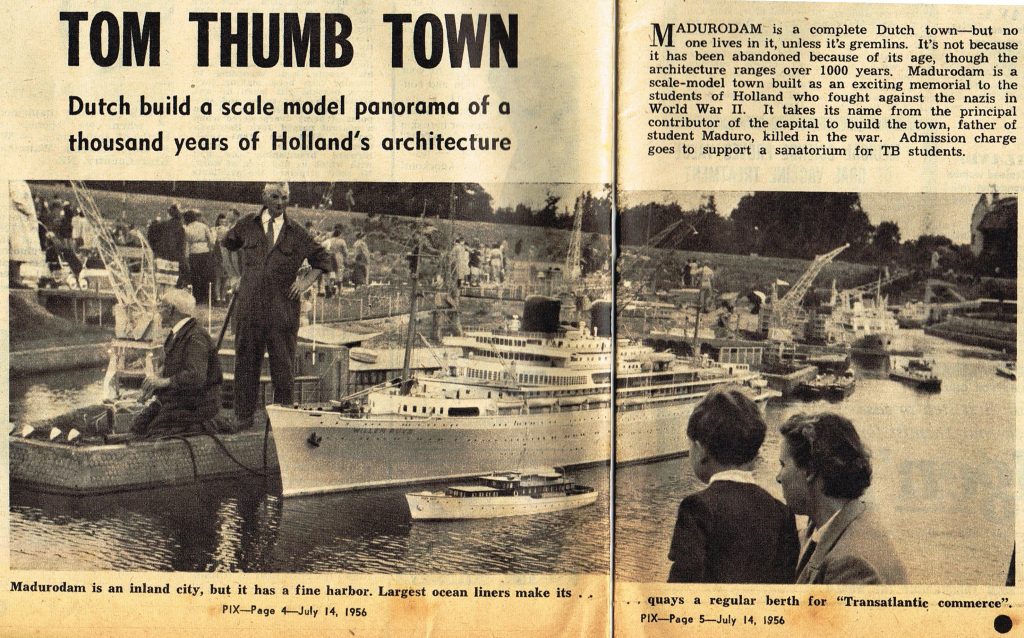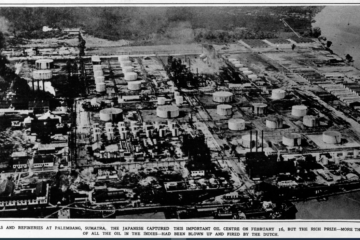Royal Rotterdamsche Lloyd (then Nedlloyd and now part of Maersk) started building the ship in 1938. The company was in the process to replace the aging fleet of ships on the Dutch East Indies route, her keel was laid in 1939 at De Schelde shipyard in Vlissingen, Netherlands. Interrupted by World War II and two bombing raids, the ship was finally launched in July 1946, as Willem Ruys. The ship was named after the grandson of the founder of the Rotterdamsche Lloyd who was taken hostage and shot during the war.
She could accommodate 900 passengers. The ship featured a superstructure very different from other liners of that era; Willem Ruys pioneered low-slung aluminium lifeboats, within the upper works’ flanks. The next ship to adopt this unique arrangement was the SS Canberra in 1961. Today, all cruise ships follow this layout, with fibreglass-reinforced plastic (FRP) used for lifeboat hulls.
The ship became the flagship of the Royal Rotterdam Lloyd and sailed until 1958 on the regular service that this company maintained to the Dutch East Indies and later Indonesia. During this period it transported – on these trips – emigrants from the Netherlands to Australia and New Zealand.
On 6 January 1953, Willem Ruys collided in the Red Sea with running mate MS Oranje, which was heading in the opposite direction. At that time, it was common for passenger ships to pass each other at close range to entertain their passengers. During the (later heavily criticised) abrupt and fast approach of Oranje, Willem Ruys made an unexpected swing to the left, resulting in a collision. Oranje badly damaged her bow. Due to the possibility that she would be impounded for safety reasons, she was unable to call at Colombo as scheduled, and went directly to Jakarta. Willem Ruys suffered less damage. There was no loss of life involved. Later, it was determined that miscommunication on both ships had caused the collision.

The collision of the Willem Ruys and the Oranje saw the Johan Van Oldenbarnevelt hired to substitute for the Willem Ruys for one Europe – Djakarta round trip.
With Indonesia no longer a destination, the ship started on 7 March 1959 on her next life, bringing Dutch immigrants to Australia and New Zealand. She departed from Rotterdam, sailing via Southampton, the Mediterranean, the Suez Canal, Fremantle, Melbourne, Sydney, New Zealand, returning via the Panama Canal. The Royal Dutch Mail Ships (Willem Ruys, Johan van Oldenbarnevelt and Oranje) became a popular alternative to the British liners. For nine years the ship made 5 of such round trips every year. At the end of 1964, due to a strong drop in passenger numbers, Willem Ruys was laid up in Rotterdam and put up for sale.
The following year the ship was sold to the Flotta Lauro Line and renamed Achille Lauro after the company’s owner. She was extensively rebuilt and modernised after an August 1965 onboard explosion, and entered service in 1966 carrying passengers to Sydney, Australia.
Next she was laid up in Tenerife when Lauro Lines went bankrupt in 1982. The Chandris Line took possession of her under a charter arrangement in 1985. Later that year four members of the Palestine Liberation Front (PLF) hijacked the liner off Egypt as she was sailing from Alexandria to Port Said. After the drama that led to the murder of a Jewish disabled passenger the ship continued in service. She was re-flagged in 1989 when the Lauro Line was taken over by the Mediterranean Shipping Company to become “StarLauro”.

In the evening of 30 November 1994, she caught fire off the coast of Somalia while en route to South Africa, with 979 passengers and crew aboard. Two died and eight were wounded during the evacuation and transfer to rescue ships. The ship sank a few days later.

See also:
Dutch immigrant ships to Australia
Hennik Family on the Zuiderkruis
Other sources:

